Today’s Current Affairs: 30th Jun 2023 for UPSC IAS exams, State PSC exams, SSC CGL, State SSC, RRB, Railways, Banking Exam & IBPS, etc
Table of Contents
30 Minerals As Critical To India:

An expert committee set up by the Central Government recently identified 30 minerals as critical to India, including lithium and vanadium, which are largely used in the manufacturing of batteries.
- Critical Minerals is a metallic or non-metallic element that has two characteristics.
- It is essential for the functioning of our modern technologies, economies or national security and
- There is a risk that its supply chains could be disrupted.
- The ‘criticality’ of minerals changes with time as supply and society’s needs shift.
- They are used to manufacture advanced technologies, including mobile phones, computers, fibre-optic cables, semiconductors, banknotes, and defence, aerospace and medical applications.
- Many are used in low-emission technologies, such as electric vehicles, wind turbines, solar panels, and rechargeable batteries.
- Some are also crucial for common products, such as stainless steel and electronics.
- Examples: antimony, beryllium, bismuth, cobalt, copper, gallium, germanium, lithium, vanadium etc.
- Top Producers: Chile, Indonesia, Congo, China, Australia and South Africa.
Mineral Security Partnership:
- It is an ambitious new initiative to bolster critical mineral supply chains, announced by the United States (US) and key partner countries in June 2022.
- The goal of the alliance is to ensure that critical minerals are produced, processed, and recycled in a manner that supports the ability of countries to realise the full economic development benefit of their geological endowments.
Five-Colour Silk Imperial Edict Found In North China’s Hebei Province:

A five-colour silk imperial edict, dating back to Qing Dynasty (1644-1911), was recently found in north China’s Hebei Province.
- Qing Dynasty or Ch’ing Dynasty, or Manchu Dynasty, was the final imperial dynasty in China, lasting from 1644 to 1912.
- It was preceded by the Han-led Ming Dynasty (1368–1644) and followed by the Republic of China era (1912–1949).
- Under the Qing, the empire’s territory grew to treble its size under the preceding Ming dynasty (1368–1644).
- The Qing Dynasty annexed Mongolia, Northeast China, Xinjiang, Tibet, and Taiwan, establishing a territory larger than that of today’s China ,the largest China has ever been.
- In the early 1600s, the Manchu people of northern China began to unite against the Ming Dynasty.
- They formed a somewhat military society and mobilised a large army.
- In 1644, the Manchus crossed the Great Wall and invaded China.
- They soon took control of the Chinese capital city, Beijing, and declared the beginning of a new dynasty called the Qing.
- The first Qing Emperor was a five-year-old boy who became the Shunzhi Emperor.
- The Manchus continued to expand and conquer more of China.
- In 1683, under the Kangxi Emperor, the Qing Empire included all of China.
UNODC World Drug Report 2023:
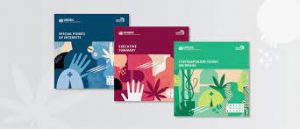
The UNODC World Drug Report 2023 (a yearly report) highlights the expanding illicit drug markets and the challenges they pose to health services and law enforcement.
Key findings:
- Over 296 million people worldwide used drugs in 2021, a 23% increase over the past decade.
- The increasing dominance of synthetic drugs, such as methamphetamine, and fentanyl which have transformed illicit drug markets due to their low cost and ease of production.
- Drug use disorder cases have surged by 45% in the last ten years
- Accelerated environmental devastation and crime caused by drug trafficking in the Amazon Basin.
- Only one in five individuals with drug use disorders received treatment in 2021, with significant regional disparities in access to treatment
- Illicit drug economies exacerbate conflicts, human rights abuses, and environmental devastation.
- Illicit drug trade finances non-state armed and insurgency groups in the Sahel region. Prioritizing public health in regulating med
UNODC:
- United Nations Office on Drugs and Crime (est. 1997; HQ: Vienna) focuses on the trafficking and abuse of illicit drugs, crime prevention and criminal justice, international terrorism, and political corruption.
- It is a member of the United Nations Development Group.
Report On Children And Armed Conflict:
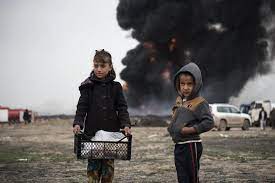
First time since 2010, the United Nations Secretary-General has removed India from the 2023 report on Children and Armed Conflict in view of measures taken by the Indian government to protect children.
- India was previously accused of recruiting and using boys in armed groups in Jammu and Kashmir (J&K).
- In 2022, a higher number of violations against children were confirmed in J&K.
- Among the various types of violations, the highest numbers were reported for the killing of 2,985 children and the maiming (wound or injured) of 5,655 children, totaling 8,631 affected children.
- This was followed by the recruitment and use of 7,622 children and the abduction of 3,985 children. Additionally, children were detained either for their actual or alleged association with armed groups (2,496), including those recognised as terrorist groups by the UN or for reasons related to national security.
- Countries recording the highest number of violations were the Democratic Republic of the Congo (DRC), Israel, the State of Palestine, Somalia, Syria, Ukraine, Afghanistan, and Yemen.
Report on Children and Armed Conflict (CAAC):
- 25 years ago, in December 1996, the UN General Assembly (UNGA) took the unprecedented decision to create a mandate to protect children from hostilities and adopted resolution 51/77 which created the CAAC mandate.
- 51/77 resolution recommended that the Secretary-General appoint for a period of three years, a Special Representative on the impact of armed conflict on children.
- Objective is to Strengthen the protection of children affected by armed conflict, raised awareness, promote the collection of information about the plight of children affected by war and foster international cooperation to improve their protection.
- The report also mentioned the detention, killing, and injuring of children by security forces.
Public Issue Of shares:

The market regulator SEBI recently approved the proposal for reducing the period for listing of shares in public issues from six days to three days.
- Public Issue of shares is When a company raises funds by selling or issuing its equity shares to the public through an offer document, it is called a public issue.
- Initial Public Offerings (IPO) is a type of issue where an unlisted company raises capital by making a fresh issue of securities or offering its existing securities for sale to the public for the first time.
- Follow-on Public Offer (FPO) is When a listed company wants additional capital, it makes either a fresh issue of securities or an offer for sale of existing securities to the public it is called a Follow-on Public Offer (FPO).
- Offer for Sale (OFS) is Institutional investors like venture funds, private equity funds etc., invest in a company at its nascent stage.
- Once the company grows bigger, these investors sell their shares to the public through the issue of an offer document and subsequently, shares get listed on the stock exchange.
- Offer for sale (OFS) is also a special mechanism through which the promoters can sell their stake in the market.
- Only promoters or shareholders holding more than 10% of the share capital in a company can come up with such an issue.
- Both retail and institutional investors can invest in an OFS and buy shares of the Company.
64th Global Environment Facility:
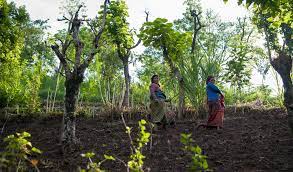
At the 64th Global Environment Facility (GEF) council meeting in Brazil, the governing body approved the disbursement of $1.4 billion to accelerate efforts to tackle the climate, biodiversity and pollution crises.
Other decisions:
- Of the total 4 billion, $653 million has been allocated specifically for biodiversity, aiming to support countries in updating their National Biodiversity Strategies and Action Plans and meeting the targets of the Kunming-Montreal Global Biodiversity Framework by 2030.
- Latin America and the Caribbean region receive the most funding, followed by Africa.
- The United Nations Development Programme, UN Environment Programme, and Food and Agriculture Organization are the top recipients among the 18 implementing agencies for GEF.
- A new trust fund called the Global Biodiversity Framework Fund will be established to support the implementation of the Kunming-Montreal biodiversity framework.
Global Environment Facility (GEF):
- It was established on the eve of the 1992 Rio Earth Summit of UNFCC to help tackle our planet’s most pressing environmental problems.
- It is a family of funds dedicated to confronting biodiversity loss, climate change, pollution, and strains on land and ocean health.
- It provides financial assistance for five major international environmental conventions:
- The Minamata Convention on Mercury.
- The Stockholm Convention on Persistent Organic Pollutants (POPs).
- The United Nations Convention on Biological Diversity (UNCBD)
- The United Nations Convention to Combat Desertification (UNCCD).
- The United Nations Framework Convention on Climate Change (UNFCCC).
- It has 184 member countries, including India.
- The governing council is the main governing body of GEF which comprises 32 members appointed by constituencies of GEF member countries (14 from developed countries, 16 from developing countries, and two from economies in transition).
- Its secretariat is based in Washington, D.C.
PM-PRANAM Scheme:
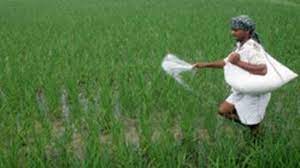
The Cabinet Committee on Economic Affairs (CCEA) approved the PM Programme for Restoration, Awareness, Generation, Nourishment and Amelioration of Mother Earth (PM-PRANAM) scheme.
- PM-PRANAM scheme aims to reduce the use of chemical fertilisers by incentivising the state.
- Under the scheme, the states which will adopt alternative fertilisers will be incentivised with the subsidy that is saved by reducing the use of chemical fertilisers.
- The main objective of the scheme is to encourage the balanced use of fertilisers in conjunction with bio fertilisers and organic fertilisers.
- The government will evaluate the utilisation of fertilisers in terms of increase or decrease in overall consumption in a year vis-a-vis consumption over the past three years.
- The Integrated Fertilisers Management System (iFMS) is the platform envisaged to track the use of fertilisers.
Sea lion : Found Dead Or Sick On California Beaches
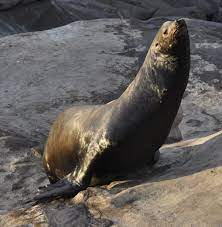
Hundreds of sea lions are found dead or sick on California beaches due to toxic offshore algae blooms.
- Sealion is a marine mammal that belongs to the family Otariidae.
- These are known for their semi-aquatic lifestyle, spending a significant amount of time both on land and in the water.
- They have a streamlined body with a large head and a long, flexible neck.
- They typically have a brown or tan coat, and adult males develop a thick mane of hair around their necks.
- They inhabit rocky shorelines, islands, and sandy beaches.
- They can be found in various regions, including the Pacific Ocean, the Atlantic Ocean, and parts of the Indian Ocean.
- Sea lions are carnivorous and primarily feed on fish, such as herring, anchovies, sardines, and squid.
- Currently, there are six subspecies of sea lions: Australian sea lions, California sea lions, Galapagos sea lions, New Zealand sea lions, South American sea lions, and Steller sea lions.




